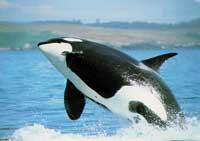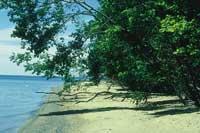PCB´s (I): one of the most evil toxic products in the industry
Polychlorobiphenyls or PCBs are chlorinated organic compounds. Depending on the number and location of the chlorine atoms, 209 different molecules can be formed. PCBs begin to be marketed in 1929, but until 1966 they were not identified as violent environmental pollutants. From that moment on production declined greatly, but it was too late, as they were already scattered all over the planet.

PCBs are used as electrical fluids, plasticizers (paints, adhesives and plastics), heating systems, surface treatments, lubricants, pesticides, etc. Electrical, hydraulic and surface treatment equipment are the areas in which these compounds have been most used and therefore the main causes of PCB dispersion. Most of the PCB in Spain/Basque Country is found in transformers and capacitors, although much is dispersed in small quantities.
As for the management of these substances, the situation is regrettable: it is estimated that 1.2 million tons of PCBs have been produced worldwide. Of these, 65% are concentrated in electrical equipment or under control; the other 4% is degraded or destroyed by incineration and the remaining 31% is dispersed by the environment (trapped in sediments or in the sea).
PCB and environment
Environmental stability, bioaccumulation capacity and degradation difficulty are some of the main characteristics of PCBs. In addition, they are insoluble in water, so they tend to retain particles and sediments. They are also easy to evaporate, facilitating the passage of water into the air. Well, PCBs are very mobile substances, being atmospheric transport the main polluting medium of distant ecosystems. According to the results of several studies, after evaporating in temperate lands and traveling through the air, in cold countries, including the poles, condense by endangering the trophic chains of the Arctic and Antarctic.
Some carcinogenic, teratogenic and immunosuppressive PCBs have been shown in animals. It has also been observed that reproductive dysfunctions have occurred in birds and mammals in the Great Lakes region of the United States and Canada. In general, bioaccumulation, i.e. increasing concentration as the trophic chain increases, the higher risk of PCBs for living beings. Therefore, the large marine mammals that are devastating fish are the ones that suffer the most from this situation, and approximately half of the oceanic fish population has noticeable PCB levels. The most serious effect in these species is the sterilization of males when they exceed the critical toxicity thresholds (about 50 ppm), endangering the survival of the species.
Health effects of people

They are dangerous compounds that people can inhale or ingest through food. PCBs are lipophilic, so they tend to accumulate in fatty tissues and move to breast milk. Very high concentrations (up to 15 ppm) have been found in the milk of women in the Nordic region of Labrador. This is very serious, given that Canadian law allows amounts below 0.2 ppm in cow's milk.
The list of diseases and effects of PCBs in people is extensive. Some of them are: liver, lung and skin cancer, skin lesions (chloracne), estrogenic effects, reduced immune response, reduced lung capacity, liver injuries, pain, nausea... An American company, for example, observed an increase in the incidence of malignant melanomas and pancreatic cancer among workers who worked with PCBs.





